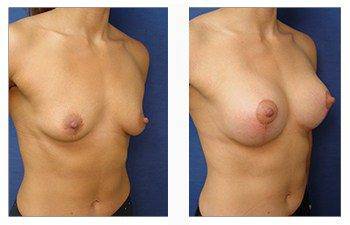

Breast lift with implant scars is avoided by optimizing incision line management postoperatively, gauging implant size and placement, and meticulous incision line suture repair. implant scars may develop in incision lines that are mandatory and located a) around the areola b) a vertical incision that extends down the areola, and c) located horizontally in the inframammary crease. Of these three lines, the variable incision line lies in the inframammary crease, and its length is determined by how much breast tissue sagging there is.
The areola incision line
The areola incision line scar can be faint or prominent based on the tension placed on the areola incision lines. The tension placed on the incision line is determined by the breast lift approach taken. The vertical breast lift approach or the anchor breast lift is able to transfer the tension away from the areola to the inferior breast pole. In contrast, the donut lift will place all of the tension on the areola which will create permanent and prominent scarring.
The inframammary crease incision line
The inframammary crease incision line is variable in length but fortunately hidden under the shadow of your breasts. For example, if there is more sagging laterally than medially, then the incision length is longer along the lateral than the medial aspect of the breast. When there is minimal medial breast sagging, then no incision line extension will be visible along the medial breast. In the latter scenario, the incision will appear like a “J” rather than an anchor incision.
How to Prevent Breast Lift with Implants Scars
Regardless, all incisions are repaired using a comprehensive technique that utilizes three layers of closure including mammary fascia as well as two layers of the skin. In addition, internal PDS sutures are used that absorb only after three months. Three months of suture retention is critical as the incision line achieves 80% of its strength after three months. Cheaper sutures will only last six weeks at which time the suture line only has 40% of its healing completed. Finally, gauging implant size and placement are critical to avoid unnecessary tension on the incision line.
Breast lift with implant scars is probably affected most by undue tension on the incision line. As such breast lift scars may become more prominent the larger the implant chosen. This is why breast augmentation patients should be cognizant of the breast implant size chosen. If they wish to have minimal scarring, it may be prudent to choose a conservative implant size.
Postoperative breast incision lines are managed to avoid breast lift with implant scars. This includes retaining specialized surgical tapes called Steri-Strips, which have several functions. First, they provide a barrier to touching the incisions with your fingers. Your skin has protective bacteria that grow there routinely, called colonization. If these bacteria get into your incision they can cause a localized infection. The second function of the Steri-Strips is to provide support for your incisions by acting like external sutures. However, the Steri-Strips are superior to stitches because they avoid a breast lift with implant scars typically seen as hash marks.
Breast lift surgery when combined with an implant must be planned meticulously to avoid prominent scars, performed appropriately, and managed optimally postoperatively. The planning process involves decisions regarding the breast lift approach involving either a vertical lift or an anchor lift. It is always prudent to preserve the inframammary fold in order to have the luxury to hide the inferior breast crease incision. When a breast implant is desired to be performed simultaneously, only moderate sagging must be present. When more generous sagging is present, then a staged breast lift with an anchor lift only can be performed followed by implant placement.
Breast lift patients must recognize that various types of breast lifts are needed to accommodate each breast’s needs. Following surgery, Steri-Strips are applied which act like external stitches thereby minimizing tension on the incision line. After 1 month, scar gels are applied to help with minimizing scarring. After 3 months, patients may consider IPL treatment to improve hyperpigmentation when prominent.
Breast lift with implants scars Summary
In conclusion, breast lifts with implant scars can be avoided by taking precautions with surgical planning, meticulous surgical implementation, and appropriate postoperative management. If you are interested in learning more about how we avoid breast lifts with implant scars, please make a consultation at SurgiSculpt.

